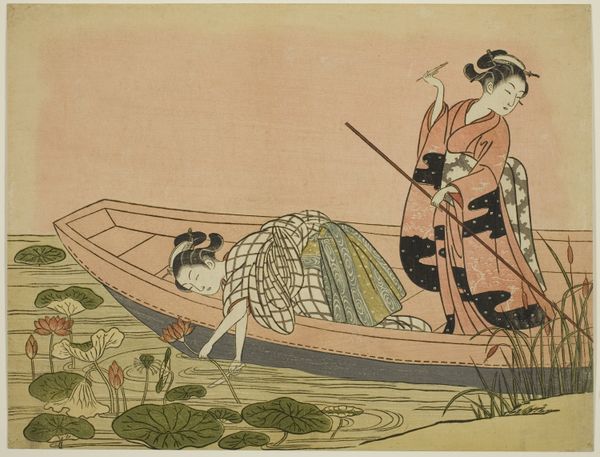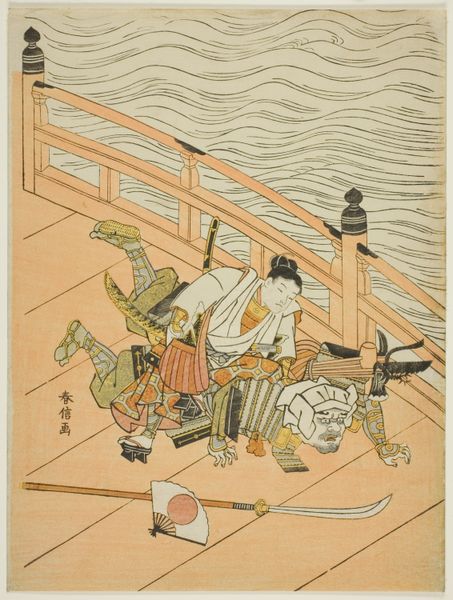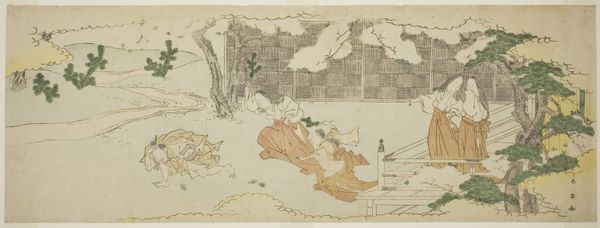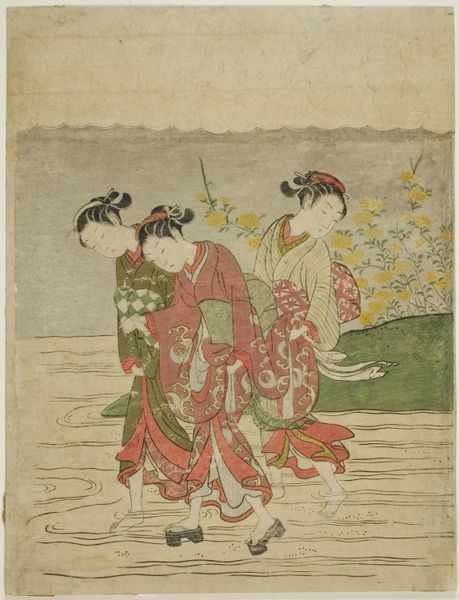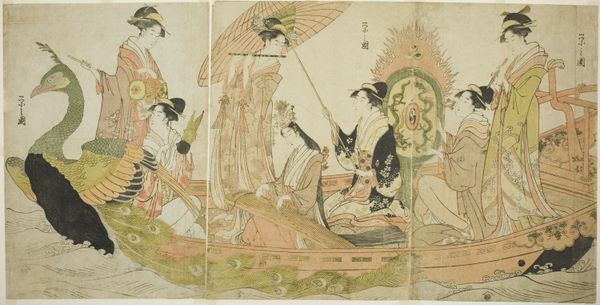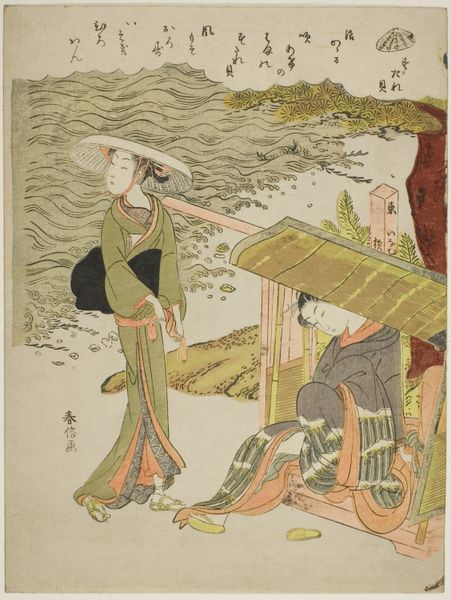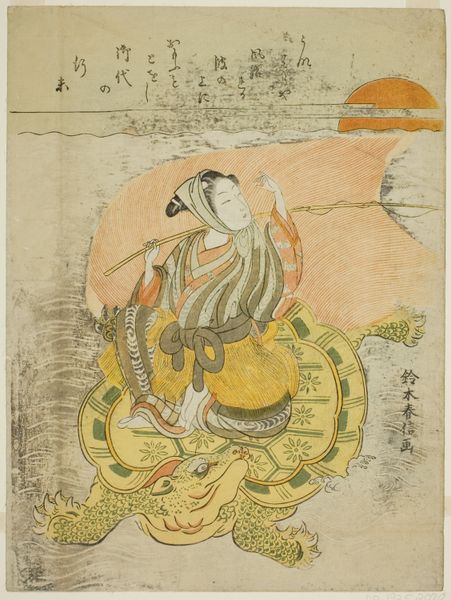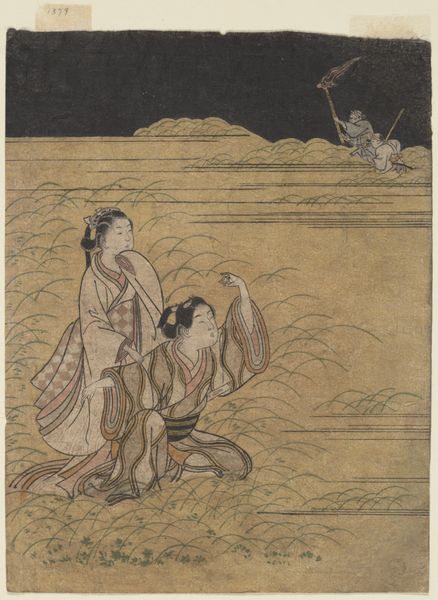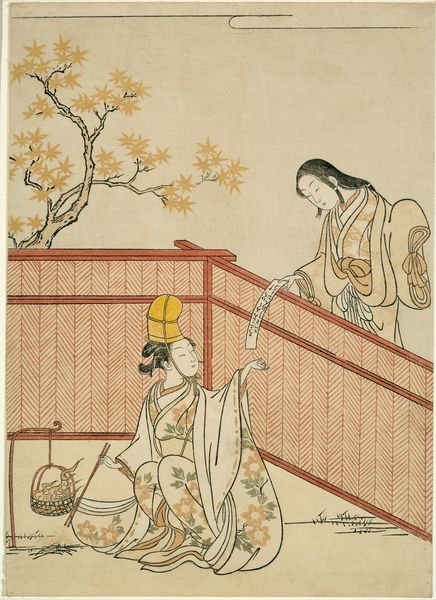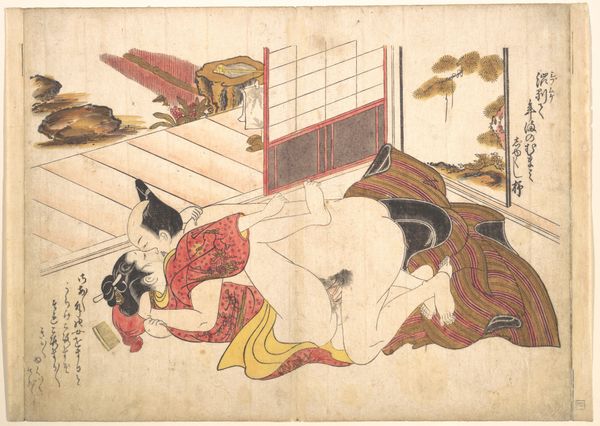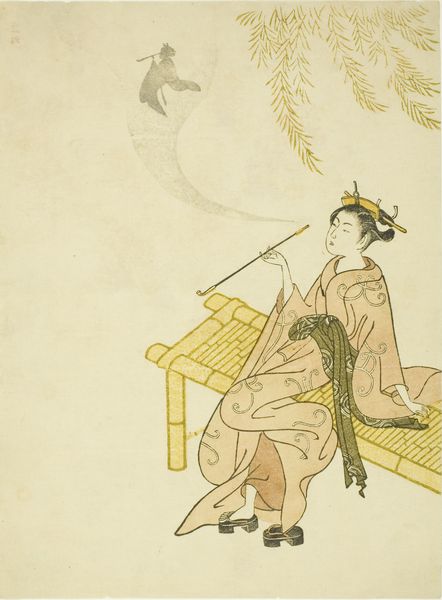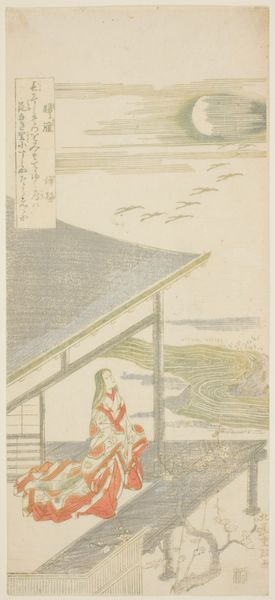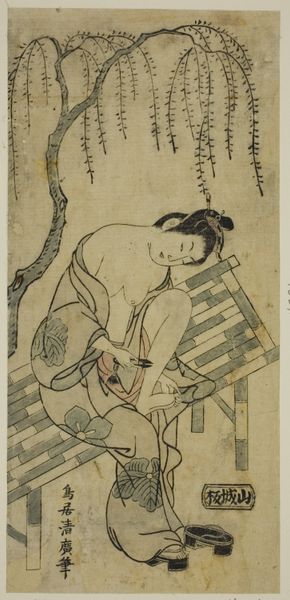
Dimensions: 20.3 × 27.6 cm (8 1/8 × 10 7/8 in.)
Copyright: Public Domain
Curator: Let's delve into this woodblock print, "Gathering Lotus Flowers," crafted around 1765 by Suzuki Harunobu. It is currently held in the Art Institute of Chicago. What strikes you first about it? Editor: The delicacy of the scene, immediately. The light palette, the serene expressions of the women, it all evokes a sense of gentle beauty and understated emotion. The lotus flowers, especially, are quite captivating. Curator: Ukiyo-e prints like this one often depict scenes from daily life, particularly leisure activities. Harunobu was a pivotal figure in perfecting full-color woodblock printing, which revolutionized the genre and allowed for richer visual storytelling aimed at wider audiences than previously possible. Editor: Absolutely, the lotus, as we know, carries profound significance in Asian cultures, symbolizing purity, enlightenment, rebirth. Seeing the women reaching for them, I wonder about the emotional and spiritual resonance these flowers held for them, beyond their mere beauty. What would gathering lotus flowers communicate about social class in this era? Curator: The depiction of women engaging in what appears to be leisurely flower-gathering certainly speaks to evolving roles. In Edo society, images of idealized femininity and the floating world provided a form of escapism and offered alternative, and sometimes subversive, visions of life. Editor: Looking closer at their kimono patterns and hair ornaments, it feels as if there is encoded information about their roles in society or even the season being depicted. One woman is actively gathering, while the other steadies the boat, there's a silent cooperation and interdependence, right? Curator: Indeed. Also, it's important to note that prints like these circulated widely and became affordable to many beyond the elite circles who might have been the only people viewing art beforehand. This meant Ukiyo-e played a vital role in shaping broader public tastes. Editor: I find the print subtly profound. What might seem a simple snapshot of a calm afternoon contains layers of social commentary, aspiration, and, of course, the quiet power of symbols resonating through generations. Curator: Agreed, exploring this print gives us a wonderful glimpse into a fascinating confluence of artistic innovation, social change, and the symbolic power of everyday life in 18th-century Japan.
Comments
No comments
Be the first to comment and join the conversation on the ultimate creative platform.
